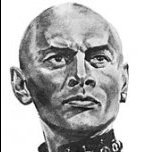Forums
-
Bangkok Ladyboys Forum - Sign up to see the pictures!
-
- 37,718
- posts
-
- 50,263
- posts
-
- 3,135
- posts
-

- By racing35
-
- 8,744
- posts
-
- 5,519
- posts
-

- By Danum99
-
- 562
- posts
-

- By CJ-BLF
-
- 2,602
- posts
-

- By thehawk
-
- 2,536
- posts
-

- By linsissygurl
-
-
Public Forum (No swearing or Bar Ladyboy chat allowed in this area)
-
- 190
- posts
-
- 4,018
- posts
-
- 1,236
- posts
-
- 943
- posts
-
- 368
- posts
-
- By Denbosch1971
-
- 486
- posts
-

- By Markm
-
- 1,321
- posts
-
- 978
- posts
-
- 135
- posts
-
-
Recently Browsing 0 members
No registered users viewing this page.















